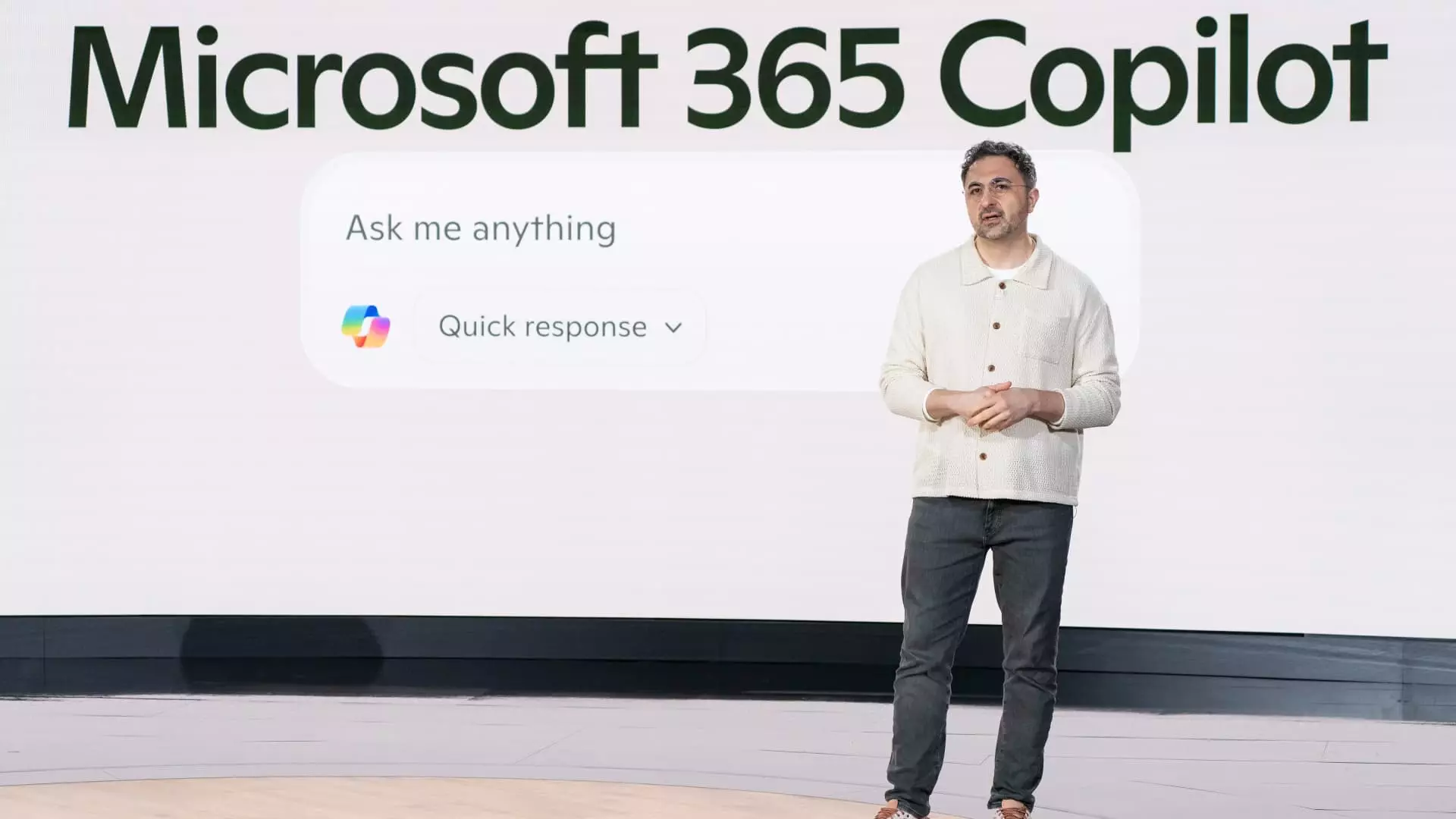In the rapidly evolving landscape of artificial intelligence (AI), the pressure to innovate can be relentless. However, Microsoft has adopted a calculated stance, notably by choosing not to exclusively harness the immense capabilities of Nvidia’s graphics processing units (GPUs) for state-of-the-art model creation. This strategic decision, articulated by Mustafa Suleyman, the CEO of AI at Microsoft, reveals a deeper understanding of the nuances of AI development. Instead of rushing to create groundbreaking AI models, Microsoft seems to be leaning into a method that emphasizes patience, cost efficiency, and the significance of targeted applications.
Suleyman’s strategy champions the idea that being a “follower” rather than a fervent pioneer can often yield more productive results. By waiting to understand where the most critical advancements lie—waiting for the “off-frontier” opportunities that come three to six months after the initial breakthroughs from the likes of OpenAI—Microsoft can tailor solutions that are not only more effective but also less capital-intensive. This approach illustrates a broader strategy that values long-term stability and sustainability over immediate, but potentially costly advancements.
Building Partnerships for Progress
The relationship between Microsoft and OpenAI is emblematic of this strategy. Microsoft has made significant investments in OpenAI—reportedly amounting to $13.75 billion—creating a symbiotic relationship that benefits both parties. OpenAI’s innovative models enhance Microsoft’s offerings, providing them with cutting-edge conversational AI capabilities that have integrated seamlessly into tools like Bing and the Microsoft Copilot. However, recent developments have revealed cracks in this once-exclusive partnership, particularly as OpenAI begins working with competitors like Oracle, prompting Microsoft to reconsider the dynamics of their engagement.
This evolving landscape of AI partnerships highlights a pivotal shift in how companies perceive collaboration in technological development. Rather than viewing relationships as rigid hierarchies, the tech world is evolving toward a more fluid model where partnerships can be both collaborative and competitive. This duality allows companies to diversify their capabilities while maintaining a competitive edge, a tactic that Microsoft appears keenly aware of.
In-House Talent: The Heart of Microsoft’s Strategy
While the commitment to collaboration remains critical, Suleyman emphasizes the significance of in-house talent and capabilities at Microsoft. The investment in building a robust internal AI team suggests a long-term vision: Microsoft is not merely a consumer of technology; it seeks to become a prolific creator of its own AI innovations. This dual approach serves to fortify Microsoft’s position in the AI arena, ensuring that they have the resources and knowledge to develop technologies that meet specific needs, rather than simply chasing the latest trends.
Moreover, the gradual introduction of new features, like the “memory” function in Copilot, suggests that Microsoft is not merely participating in the AI race but rather shaping it. By focusing on features that enhance user experience and efficiency, Microsoft demonstrates how AI can augment human capabilities without veering into the realm of spectacular but impractical advancements. Suleyman’s philosophy is clear: a focus on user-centric applications can lead to sustainable growth and relevance in an otherwise crowded market.
The Future of AI: Looking Ahead
As Microsoft navigates its role in the ongoing AI revolution, the company’s strategy reflects an understanding that the next decade will be crucial for shaping the technology landscape. With increasing complexity in AI models and the challenges of developing sustainable, efficient technologies, Suleyman’s insights underscore the value of patience and focused innovation.
This long-term perspective, which considers broader implications and future needs, sets Microsoft apart in a field often driven by the allure of immediate success. With a keen eye on building self-sufficiency in AI capabilities, Microsoft is not just aiming to keep up with its competitors; it is preparing to redefine its position in the AI ecosystem.
In a sector that is frequently enamored by rapid advancements, Microsoft’s careful pacing signals a sophisticated understanding of the interplay between innovation, partnership, and cost-effectiveness. The tech giant’s commitment to strategic patience may very well serve as a roadmap for others in the industry, demonstrating the power of a methodical, measured approach to one of today’s most transformative technologies.

